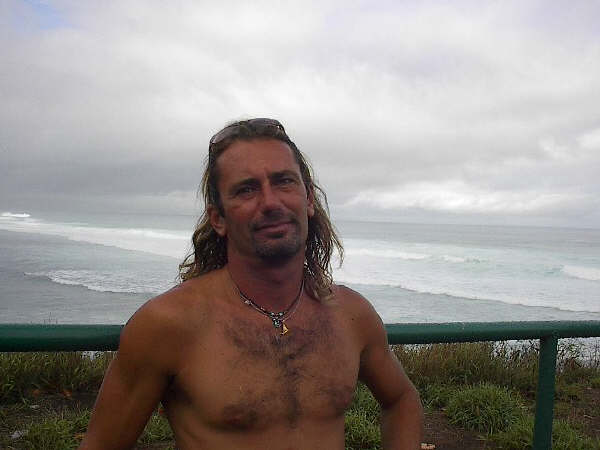
4am significant buoy readings and discussion
South shore
Barbers is useless when there's a big NW swell, so we have to check the Lahaina webcam. As one would expect, no wrap is present (way too west) and it's flat.
North shore
NW001
6.9ft @ 13s from 334° (NNW)
4.9ft @ 10s from 360° (N)
Hanalei
9.8ft @ 14s from 327° (NW) Hanalei
Waimea
9ft @ 15s from 322° (NW)
Pauwela
8.3ft @ 17s from 322° (NW)
5.1ft @ 10s from 35° (NE)
3.8ft @ 6s from 53° (ENE)
Below are the graphs of NW, Waimea and Pauwela together with yesterday's Surfline forecast. I squeezed in Waimea, because yesterday afternoon I had the Pipeline webcam on the screen while at work, and around 2-3pm it was a very doable and clean head and a half to double (50 guys out). Then one sets started capping on the second reef and everybody started scratching for the horizon and from then on, it was a steady rise that pretty much meant the end of the surfing session. More and more sets started breaking on the second reef and soon after on the third. The inside turned into a mess of giant water chunks, with a few leftover bodyboarders trying to make sense of it with very limited success. I should have taken screen shots to show you the before and after, but was too busy to do so.
The whole thing is simply described by the steep rise of the blue line on Waimea's graph. From 2 to 10ft in 12h is a pretty steep rise for a 18s swell.
Notice also that (as suggested yesterday) the Surfline forecast was a good 12h too late (blue arrows on the right). The WW3 model (on which all wave forecast websites are based), has been early instead lately, so my guess is that Surfline is compensating that, by introducing a delay to it (a bit too big, imo). Whatever it is and nonetheless, this picture illustrates why Surfline remains my website of choice: the open ocean swell prediction graphs (links n.14 and 15 in the GP's meteo websites list on the right column of this blog) are comparable to what the graph of the buoys will look like. Once again, those predictions have nothing to do with the so called "Hawaiian scale", which I never use (because it's unscientific and makes no sense at all).
The whole thing is simply described by the steep rise of the blue line on Waimea's graph. From 2 to 10ft in 12h is a pretty steep rise for a 18s swell.
Notice also that (as suggested yesterday) the Surfline forecast was a good 12h too late (blue arrows on the right). The WW3 model (on which all wave forecast websites are based), has been early instead lately, so my guess is that Surfline is compensating that, by introducing a delay to it (a bit too big, imo). Whatever it is and nonetheless, this picture illustrates why Surfline remains my website of choice: the open ocean swell prediction graphs (links n.14 and 15 in the GP's meteo websites list on the right column of this blog) are comparable to what the graph of the buoys will look like. Once again, those predictions have nothing to do with the so called "Hawaiian scale", which I never use (because it's unscientific and makes no sense at all).
I also never check the spots forecast, because (as presumptuous as it sounds), I know better. Meaning, if I know the open ocean swells (what the buoys measure), I can predict the size at the different spots, better than any computer based model. And if you guys start paying attention to the buoy readings (size, period and direction) and the related size of the breaking waves at your favorite spots, it only takes a few months of observations to acquire that local knowledge. Obviously, the more you do that, the better you'll become at doing your own forecast.
The other reason why I am a Surfline subscriber is the Hawaii buoy page (link n.11), which is where I grab and post the 4am readings.
The other reason why I am a Surfline subscriber is the Hawaii buoy page (link n.11), which is where I grab and post the 4am readings.
As suggested by the NW graph, the swell is now on the way down, but don't expect to notice much of that in the water. I mean, when a swell goes from XL to L, it doesn't really change much for most surfers: it's still big enough for most spots to be unsurfable (that is the case of Hookipa). Seen the fresh trades, the place to be is obviously the west side, with Honolua providing classic big barreling conditions (so obviously, that that's exactly when I don't bother going, as it's going to be packed... but I would love to receive some photos!). Seek sheltered spots if you're on the north shore.

Wind map at noon (the other ones can be found at link n.-2 of GP's meteo websites list in the right column).

North Pacific has a NW and the windswell fetch.

South Pacific has a weak fetch in the Tasman Sea.

Morning sky.










No comments:
Post a Comment